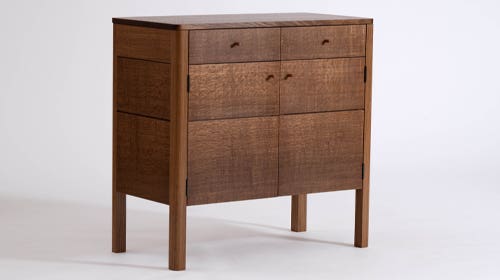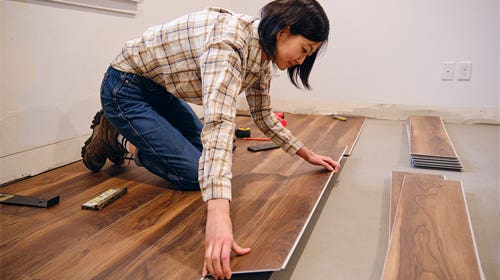Virtual look at studio furniture history
Pritam & Eames’ archival masterpiece took four years to compile and is now available on the gallery’s Web site Pritam & Eames in East Hampton, N.Y., the country’s oldest established…
Pritam & Eames’ archival masterpiece took four years to compile and is now available on the gallery’s Web site
Pritam & Eames in East Hampton, N.Y., the country’s oldest established gallery associated with the American studio furniture movement, has placed on its Web site “The Second Decade,” a chronological look at its second decade of existence from 1991-2001.
It took gallery owners Bebe Pritam Johnson and Warren Eames Johnson four years to put the historic piece together, which contains more than 300 pages of text and about 850 photos of studio furniture and furnishings. The Pritam & Eames Web site also contains “The First Decade,” an archival look of the gallery’s first 10 years of exhibitions, beginning with its opening in 1981.
“We wanted to produce a record in some disciplined manner of our experience in the studio furniture field,” says Beebe. “Since we had the photography, often which Warren took, and the records and the will to create the document, that’s how we created the archive.”
“We hoped that the chronology of the shows reflected and revealed the movement of the field through those years,” says Warren. “Certainly, Beebe and I were present in the choices, but I think it was beyond that. We were looking at the work that was available and that we were contacted about, and I think it is very representative.
“In the beginning, I suppose we didn’t structure it to pull you in to threads of the story. We didn’t have an overview plan like that, where you could give a narrative map to somebody and conduct a tour, actually. But we genuinely saw it as a source of research because, apart from this, how much is there that people can go and source and look at in one spot?”
In the introduction written for “The Second Decade,” Warren mentions the function-versus-art debate that has evolved around studio furniture for years.
“It’s kind of a mind stretcher that can always be there,” he observes. “It doesn’t have to be a polarizer.”
“There certainly are showcases, galleries, that embrace one side of the equation and we’ve always tilted toward the idea that this is furniture,” adds Beebe. “We’ve never represented it. It almost makes me cry when I hear people say from time to time that this isn’t furniture, this is art, as if that bestowed some greater validation. If they’ve ever tried to make a piece of furniture, they would know what the challenges are.”
When asked to identify four furniture makers who were the movers and shakers of the decade, the gallery owners came up with six people and their respective pieces that they felt were representative of the outstanding work designed and built during the period.
“They are different than the first decade, a little bit, but only by two people,” Beebe notes. “The first piece was Jere Osgood’s ‘Elliptical Shell Desk’ in 1993, which is very much a revisit of his 1979 original. It still, to me, is one of the most beautiful pieces of furniture. And then [James] Krenov in 1995 came up with ‘Fire and Smoke.’ ”
“You see some of the strongest players continuing to do exceptional work [in the second decade], maybe not quite as much, but does that make a big difference?,” asks Warren. “It’s still of the highest order, and certain people probably stand out.”
Hank Gilpin’s oak commission in 1995 and Judy McKie’s “Pattern Table” were the other two pieces selected as representative of makers from both decades. Brian Newell’s “Spider Cabinet” in 2001 and Christina Madsen’s chest of drawers from the gallery’s 20th anniversary show were selected as the final two pieces.
“The Second Decade” has received quite a response from artists and craftsmen, according to the gallery owners.
“They see it as their story,” states Warren. “It’s very intense. Some of the reactions are just wonderful because it is like revisiting friends and, as one person put it, ‘Oh my goodness, all of the work that was done in those years.’ That’s a common comment. So it can be quite emotional, I think.
“I suppose, in a way, both Beebe and I genuinely feel that representing this work gave so much to us in terms of just a wonderful life. I know this has the potential to sound corny, but in a way it is something that we could give back.”
Pritam & Eames is now in its 39th year in business and, when asked to characterize the furniture that has been displayed since 2002 at the Long Island gallery, Beebe describes it as a further maturation of the previous decade’s work.
Emerging talent
“Current Student Work” continues through May 29 at the Messler Gallery of the Center for Furniture Craftsmanship in Rockport, Maine. The exhibition consists of furniture and decorative pieces created by the 13 participants in the school’s nine-month comprehensive program.
Exhibitors include Christopher Atwood, Erin Cullen, Ben Fleis, Jordan Goodman, Reed Hansuld, Chris Howe, Tyler Killian, Shona Kinniburgh, Matthew Miller, Dave Stetson, Mike Todd, Jamie Vander Salm and Andrea Young.
Contacts
Center for Furniture Craftsmanship, 25 Mill St., Rockport, ME 04856. Tel: 207-594-5611. www.woodschool.org
Pritam & Eames, 29 Race Lane, East Hampton, NY 11937. Tel: 631-324-7111. www.pritameames.com
This article originally appeared in the June 2009 issue.







